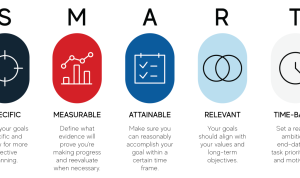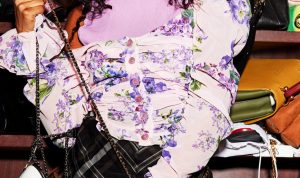Introduction: The Digital Runway of Fashion
The fashion industry has always been about trends, innovation, and self-expression. Today, the most significant trend is happening not on the catwalks of Milan or Paris, but in the digital world of e-commerce. The way we discover, shop, and transact for clothing and accessories has been fundamentally reshaped by the internet. For fashion brands, retailers, and entrepreneurs, understanding the intricacies of online fashion sales and transactions is no longer optional—it’s the key to survival and success.
This comprehensive guide will walk you through everything you need to know about selling fashion and apparel online, from creating a captivating digital storefront to ensuring a seamless checkout experience. We’ll delve into the strategies that drive conversions, the technologies that make transactions secure, and the best practices that build lasting customer loyalty.
Chapter 1: Building Your Digital Storefront for Success
Your website is your flagship store. It needs to be more than just a catalog; it should be a virtual experience that mirrors the excitement of shopping in a physical boutique.
1. The Power of Visuals: In fashion, visuals are everything. High-quality, professional photography is non-negotiable. Showcase your products from multiple angles, use diverse models, and include lifestyle shots that help customers visualize themselves wearing your items. Don’t forget video content—a short clip showing the fabric’s movement or how an item drapes can significantly boost sales.
2. A User-Centric Design: Your site’s layout should be clean, intuitive, and easy to navigate. A smooth user experience (UX) is crucial. Implement clear categories, a powerful search bar, and filters that allow customers to sort by size, color, style, and price. Remember, a frustrated shopper is a lost sale.
3. Compelling Product Descriptions: Beyond just listing features, your product descriptions should tell a story. Use descriptive language to highlight the quality of the fabric, the uniqueness of the design, and the inspiration behind the piece. Incorporate keywords that customers might use when searching, such as “sustainable cotton dress,” “vintage leather jacket,” or “classic formal wear.”
Chapter 2: The Art of Driving Traffic and Engagement
Having a beautiful store is only half the battle; you need to get people through the virtual doors.
1. SEO for Fashion: Optimizing your site for search engines is critical. Use relevant keywords in your product titles, descriptions, and blog posts. Think about what your target audience is searching for. Are they looking for “men’s streetwear,” “affordable women’s formal dresses,” or “eco-friendly activewear”? Create content that answers their questions and solves their fashion dilemmas.
2. The Influence of Social Media: Fashion sales and transactions and social media are a match made in heaven. Platforms like Instagram, Pinterest, and TikTok are powerful tools for showcasing your products and building a brand community. Use engaging visuals, run contests, and partner with influencers to reach a wider audience. Remember to make your content shoppable with tags and links that lead directly to your products.
3. Content Marketing: A blog is an excellent way to establish your brand as a style authority. Write articles about fashion trends, styling tips, seasonal lookbooks, or behind-the-scenes stories of your brand. This not only engages your audience but also creates valuable content that can improve your site’s search engine ranking.
Chapter 3: Streamlining the Online Transaction Process
This is where a potential sale becomes a completed transaction. A clunky or insecure checkout process is one of the biggest reasons for cart abandonment.
1. Secure and Varied Payment Options: Offer a range of trusted payment methods, including credit cards, digital wallets (like PayPal, Apple Pay, and Google Pay), and “buy now, pay later” services (like Klarna or Afterpay). This flexibility accommodates different customer preferences and builds trust. Ensure your site uses a Secure Sockets Layer (SSL) certificate to protect sensitive customer data.
2. A Frictionless Checkout: The checkout process should be as quick and simple as possible. Allow for guest checkout to avoid forcing new customers to create an account. Display a progress bar to show how many steps are left. Be transparent about all costs upfront, including taxes and shipping fees, to avoid any last-minute surprises.
3. Clear Shipping and Return Policies: Customers want to know exactly what to expect. Provide clear and detailed information about shipping times, costs, and options. A flexible and hassle-free return policy is a major confidence booster. Highlighting this can significantly reduce purchase anxiety and increase conversion rates.
Chapter 4: Beyond the Sale: Building Customer Loyalty
A successful transaction is not the end of the journey; it’s the beginning of a relationship.
1. Post-Purchase Communication: Keep customers informed about their order status with timely confirmation emails, shipping updates, and delivery notifications. A personalized thank-you note in the package can also leave a lasting positive impression.
2. Excellent Customer Service: Be responsive and helpful. Whether it’s answering questions about sizing or assisting with a return, positive customer service turns one-time buyers into loyal brand advocates. Use multiple channels for support, such as live chat, email, and phone.
3. Leveraging Data for Personalization: Use customer data to offer personalized recommendations and promotions. For example, if a customer previously purchased a denim jacket, you can send them an email showcasing new denim styles or accessories that would pair well with their past purchase. This shows you understand their style and encourages repeat business.
Conclusion: The Future of Fashion E-commerce
The world of fashion and apparel e-commerce is dynamic and ever-evolving. The brands that will thrive are those that master the entire customer journey—from the moment a potential buyer discovers their product to the joy of receiving their order. By focusing on a beautiful, user-friendly website, a strong marketing strategy, a secure and seamless transaction process, and exceptional post-purchase care, you can turn your passion for fashion into a thriving digital business.
Remember, every click, every view, and every transaction is an opportunity to tell your brand’s story and build a loyal community. Embrace the digital runway, and your fashion business will be ready to walk into a future of limitless possibilities.







